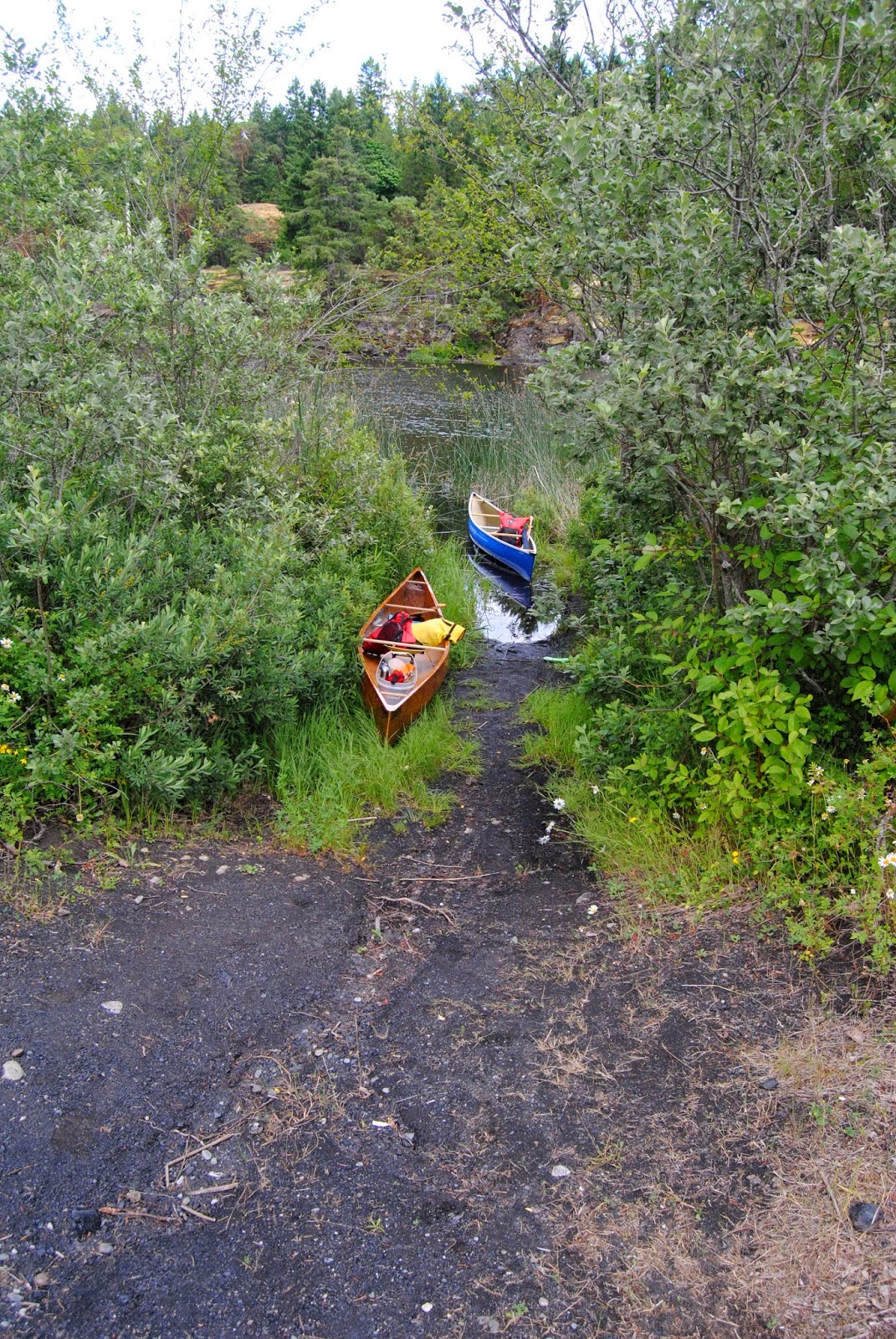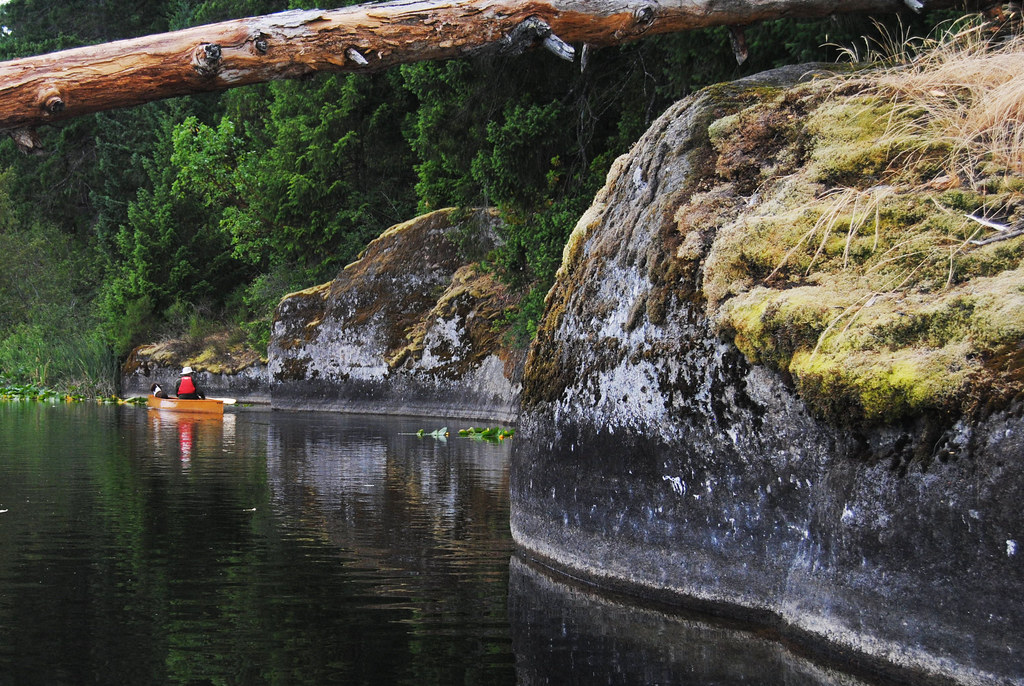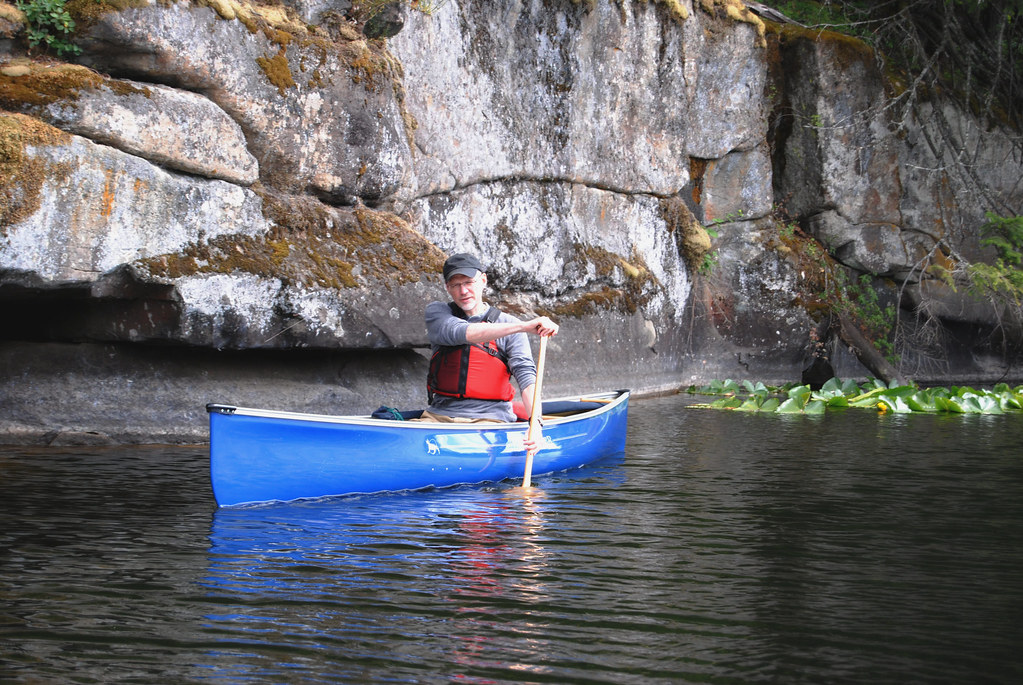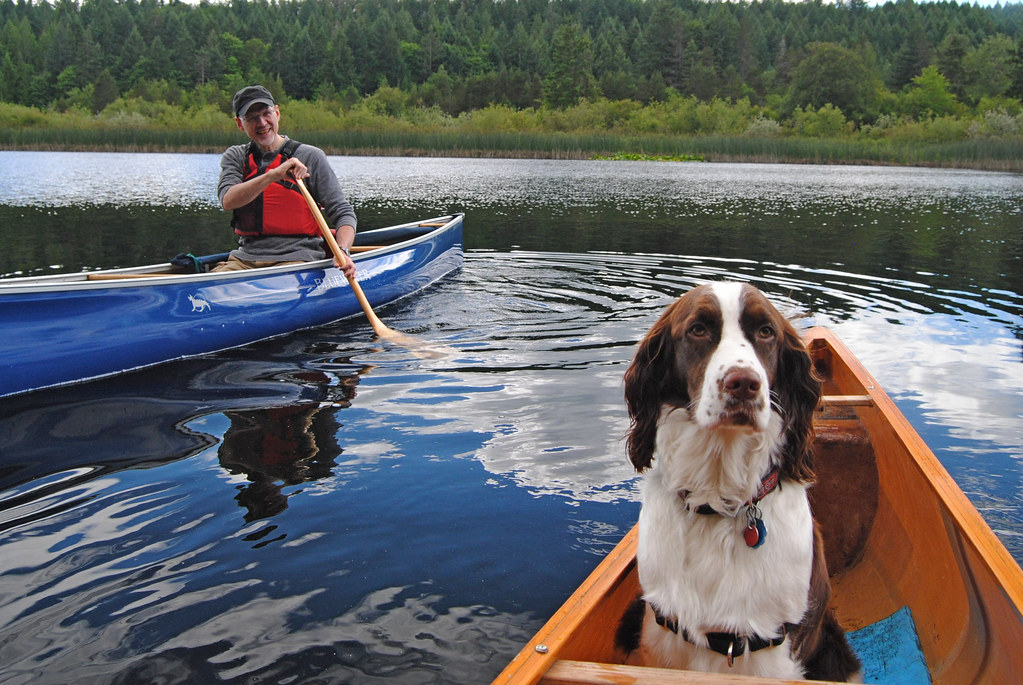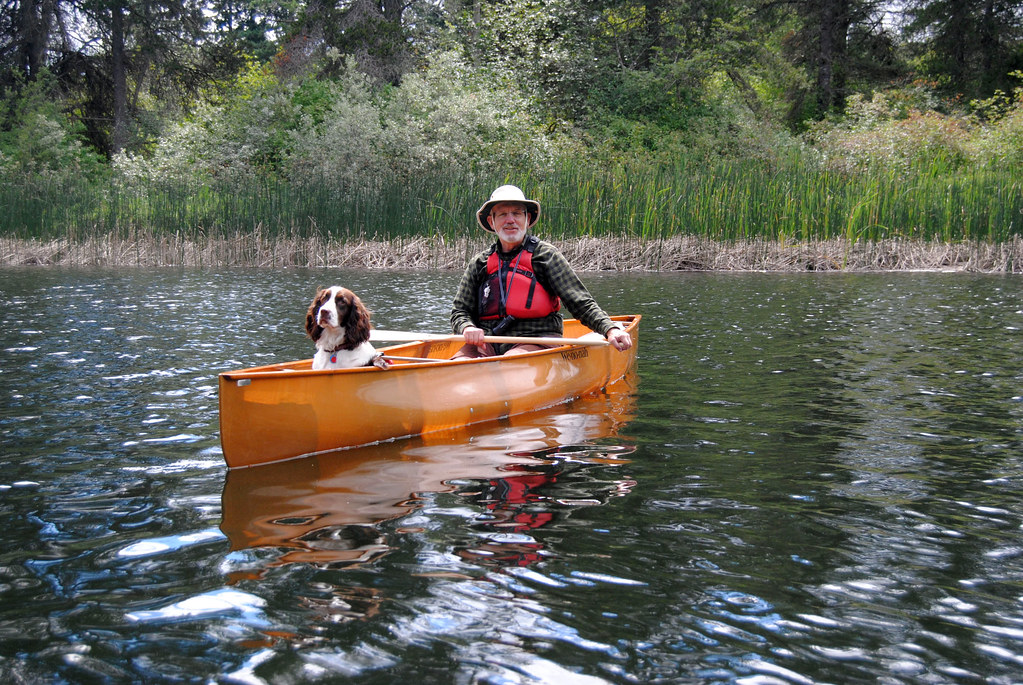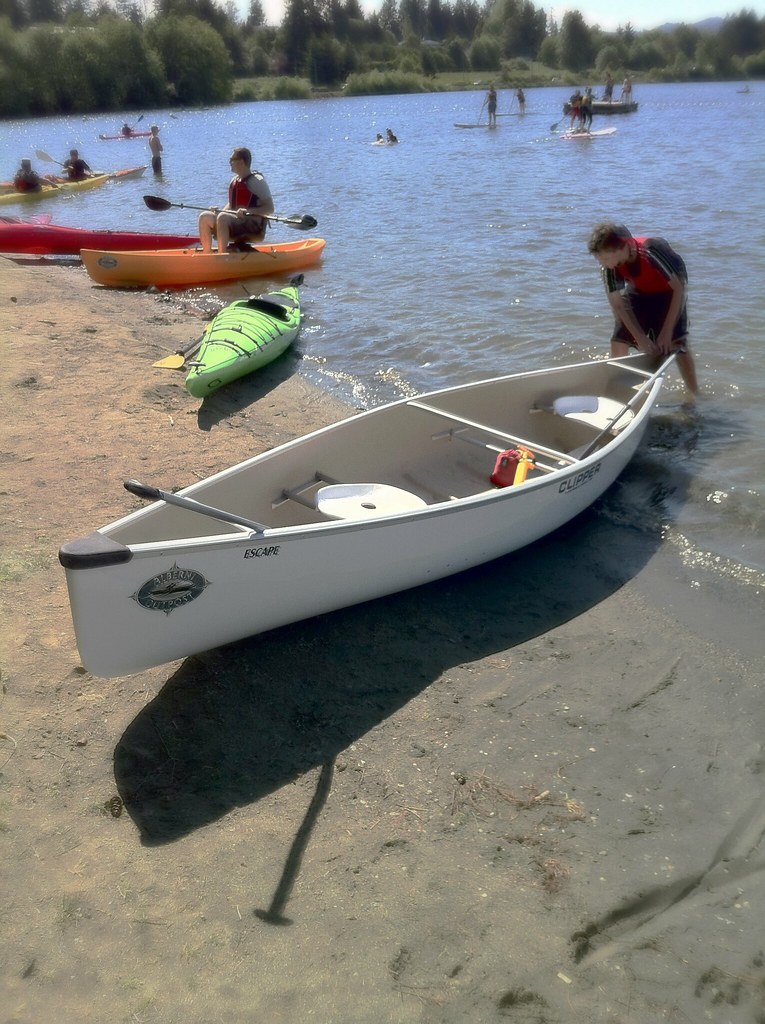 | |
| Escape |
 |
| Cascade |
We tried out the Escape and the Cascade. Both good solid canoes, and I was, as always, impressed with the build and finish of Clipper boats. I especially liked the Escape. I think it would be a great addition to my "fleet" if I had the room. A great recreation boat for taking people out who want a feeling of safety and stability, but also some fun.
The paddles were, well lets just say it, an abomination. They weighed a ton, felt cheap and uncomfortable and did not do the boats justice. Moral of the story, next year I will bring my own paddle.
But this got me thinking about paddles again. I think about paddles a lot. In a sense the paddle is like the bow to the violin. Overlooked by the casual observer, but every bit as important to the musician as the violin itself.
 |
| Playing with a Paddle on Harewood Lake |
"What I have decided is that the relationship between a paddler's comfortable and natural pull force should be matched to a blade that will transfer that force to the water with the least slippage. For most moderately fit individual, a blade like that of the classic Zaveral will probably work best."
When a strong paddler pulls hard on a thin blade it creates cavitation behind the blade, and energy is lost as the turbulence increases. It takes much more force to do this with a wide blade.
So why the prevalence of otter and beaver tail paddles in the world? I like Doug Ingram's answer, that trial and error over time has arrived at this universal design, but that doesn't really tell WHY it is so.
Part of the answer is that otter and beaver tail paddles are more forgiving on a long paddle and more versatile than a racing blade when doing advanced paddling strokes such as the Indian, Canadian (Omering) or Northwoods Stroke.
Here is a video of me using a variety of the three as I negotiate between stumps on Westwood lake.
Also important to keep in mind is the goal of the paddler and the type of paddling being done. If the goal is to get somewhere fast, a large bent shaft racing paddle in the hands of a burly paddler, will win every time. If, however, you want to feel the grace and calming tranquility of the Indian stroke for miles along a remote shore, a thin long blade is required. The depth of water and the various aspects of the canoe being paddled (especially length) are also important.
So I took an hour or so on Harewood Lake at the end of June to decide on the new paddle I wanted to use while I re-finish my beloved Bower Blade.
 |
| My Beloved Bower Blade |
I wondered if a combination of the best qualities of the Bowers Blade (long paddle with most of the blade at the tip) combined with the advantages of the classic bent shaft (larger blade) would work. I looked around at the various paddle manufacturers and sent inquiries to a few. Todd at Sanborn Canoe Company was able to provide what I was looking for. The paddle I ordered has a total length of 145 cm, a straight shaft, and the blade of their Borealis.
I ordered the paddle on June 30th and it arrived on August 1st. Pretty good for a custom order during the busy season.
Here are some photos of the paddle:
As you can see this is a lovely paddle to look at and it feels good in the hand. It is light, balanced, and carefully finished, with enough minor imperfections to show it is hand made. The durability is particularly evident and the comfort of the oiled grip was anticipated, but also nice to confirm in my own hand. I wondered if there was any way to extend that feel to both hands. My waterside hand slipped a number of times on the new varnish. Is it possible to oil the whole shat instead? I'm not sure this is possible as the glass fabric protecting the blade extends up the shaft a fair way. I may use the old tip a veteran paddler told me about -- a very gentle rub with an old pot scrubber, just enough to take that shiny gloss off. The transition from glass (on the blade) to no-glass (on the shaft) is very smooth and beautifully done.
So how did it perform? Well I brought along my two favorites to compare, the Bowers Blade and the Bent Shaft from Grey Owl.
I loved several things about the Sanborn paddle.
- The length is about right. The Bowers blade is longer and therefore allows for a prolonged up-pull at the end of the Indian stroke, but that advantage is offset by it being a bit unwieldy.
- The grip is about the right size to allow for good control and to prevent hand cramping. The Bowers Blade has a smaller bobble-style grip and after going back and forth between them, I confirmed that I do prefer the Sanborn style. Paul pointed out that this style of grip provides more control because of the added leverage.
- The blade size is about right. When switching between the Grey Owl and the Sanborn there was only a slightly more sustantial purchase with the larger blade, and that large blade is a big sail in the wind, and also just generally flaps around if you move it quickly. The balance and rigidity of the Sanborn felt sure, fast, and efficient.
- The durability is impressive in an environment like Westwood lake where colliding with underwater obstacles in inevitable!
I didn't like one aspect of the paddle. And that is the profile.
Like most hybrid "high production/hand made" paddles the transition between the shaft and the blade is more abrupt and the shaft in general is unrefined. This means that underwater recovery and the Indian stroke are not practical or quiet.
Here is a comparison of the Bowers and Sanborn profile.
You can see the long slow taper of the Bowers and the shorter transition of the Sanborn. This means that when you bring the blade forward underwater close to the boat the shaft puts up quite a spray. I found if I extended my arch on the return so that just the blade was slicing, it was not too bad. But it was also not as comfortable.
Conclusion
All and all I'm impressed with Sanborn. I got a beautiful, durable, efficient and unique paddle and would recommend the company for their service, quality, and price.
Imagine if every demo day paddler had one of these to try out a canoe with? Maybe more canoes would be sold? I'm just sayin. This is a very VERY durable paddle, but also a joy to use.







